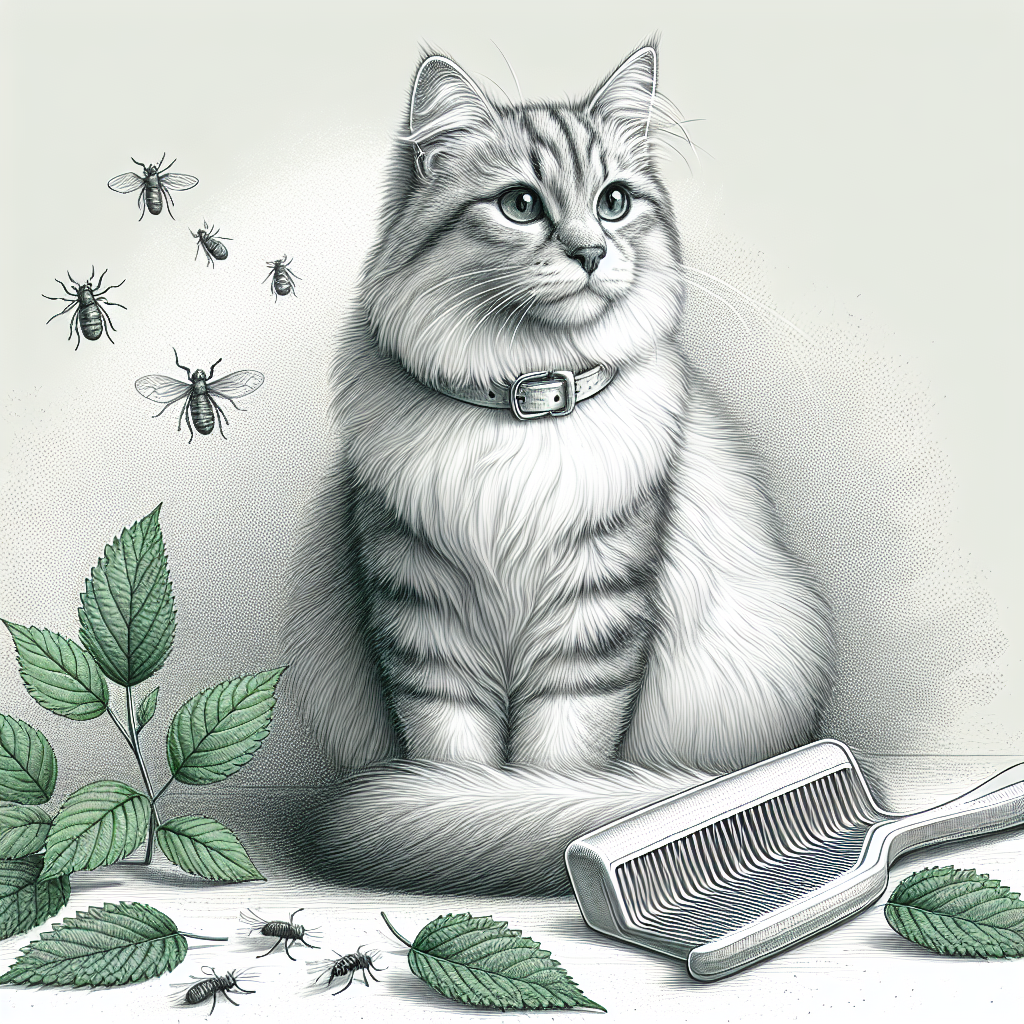
# Effective Flea Prevention Strategies for Cats
Cats are beloved companions for many, providing comfort and joy with their playful antics and affectionate purrs. However, maintaining their health and well-being requires vigilance, particularly when it comes to preventing and managing flea infestations. Fleas are tiny, wingless insects that feed on the blood of mammals and birds. For cats, fleas can be more than just a nuisance; they can cause discomfort, health issues, and even transmit diseases. This article explores effective flea prevention strategies for cats, ensuring your feline friend remains healthy and comfortable.
## Understanding Fleas: An Overview
Before discussing prevention, it’s crucial to understand what fleas are and the problems they can cause. Fleas are external parasites that thrive in warm, humid environments. They have a complex life cycle that includes egg, larval, pupal, and adult stages. This cycle can complicate eradication efforts, as different stages require different treatments.
Cats infested with fleas may experience itching, skin irritation, and even allergic reactions. Fleas can also transmit tapeworms and other diseases. In severe cases, young or small cats may suffer from anemia due to blood loss. Thus, preventing flea infestations is essential to protect your cat’s health.
## Regular Grooming and Inspection
One of the simplest yet most effective strategies for flea prevention is regular grooming and inspection of your cat. Grooming helps in removing fleas and their eggs from your cat’s coat. Use a fine-toothed flea comb to carefully comb through your cat’s fur, focusing on areas where fleas tend to hide, such as the neck, base of the tail, and under the legs.
During grooming sessions, inspect your cat’s skin for signs of fleas or flea dirt, which looks like small black specks. If you find flea dirt, it’s an indication of a flea presence, and you should take immediate action.
## Environmental Control
Fleas don’t just live on your cat; they also inhabit your home. Therefore, controlling the environment is crucial in preventing flea infestations.
– **Vacuum Regularly**: Vacuum your home frequently, especially in areas where your cat spends a lot of time. Pay close attention to carpets, rugs, and upholstery, as fleas and their eggs can hide in these places.
– **Wash Bedding**: Regularly wash your cat’s bedding, as well as any blankets or cushions they frequently use. Use hot water and a pet-safe detergent to kill fleas and their eggs.
– **Use Flea Sprays and Foggers**: Consider using flea sprays or foggers designed for home use. These products can help eliminate fleas at various stages of their life cycle. Ensure the products are safe for use around pets and follow the manufacturer’s instructions carefully.
## Topical Treatments
Topical treatments are one of the most popular and effective ways to prevent fleas on cats. These treatments are applied directly to your cat’s skin, usually at the base of the neck, where they can’t lick it off. They work by killing fleas and preventing their eggs from hatching.
Several brands offer topical flea treatments, each with different active ingredients. It’s essential to choose a product suitable for your cat’s age, weight, and health status. Consult your veterinarian before starting any topical treatment to ensure it’s safe and effective for your pet.
## Oral Medications
Oral medications are another effective flea prevention strategy. These medications come in the form of flavored tablets or chewables that your cat ingests. They work by either killing fleas that bite your cat or by sterilizing the fleas, preventing them from reproducing.
Oral medications are convenient and can be an excellent option for cats that dislike topical treatments. As with any medication, it’s crucial to consult your veterinarian to ensure the chosen product is appropriate for your cat.
## Flea Collars
Flea collars are designed to repel and kill fleas. They release active ingredients that spread over your cat’s body, providing ongoing protection. Modern flea collars are more effective and longer-lasting than older versions, offering protection for several months.
When selecting a flea collar, ensure it’s specifically designed for cats and fits properly. Some collars have breakaway features to prevent choking if your cat gets caught on something. Always follow the manufacturer’s guidelines for use and disposal.
## Natural and Alternative Remedies
For those who prefer natural or alternative approaches, several options can help prevent fleas:
– **Essential Oils**: Certain essential oils, like cedarwood and lavender, are known to repel fleas. However, not all essential oils are safe for cats, so it’s vital to use them with caution. Dilute oils properly and apply them in areas your cat can’t reach.
– **Herbal Sprays**: Herbal sprays made from ingredients like vinegar, lemon, and rosemary can be used as a natural flea deterrent. Spray these solutions lightly on your cat’s fur, avoiding the face and eyes.
– **Diatomaceous Earth**: Food-grade diatomaceous earth can be sprinkled around your home, particularly in areas where fleas may hide. This powdery substance dehydrates and kills fleas and is safe for pets when used correctly.
## Regular Veterinary Checkups
Regular veterinary checkups are essential to monitor your cat’s overall health and prevent flea infestations. Your veterinarian can recommend the most effective flea prevention products based on your cat’s age, weight, and health status. They can also identify and treat any flea-related health issues, such as allergic reactions or anemia.
## Conclusion
Preventing fleas in cats requires a multi-faceted approach, combining regular grooming, environmental control, and appropriate treatments. By being proactive and vigilant, you can ensure your cat remains free of fleas and the health issues they can cause. Remember, every cat is unique, and what works for one may not be suitable for another. Therefore, it’s essential to consult your veterinarian when choosing flea prevention strategies, ensuring your beloved feline companion enjoys a healthy, comfortable life.
#ChatGPT assisted in the creation of this article.








